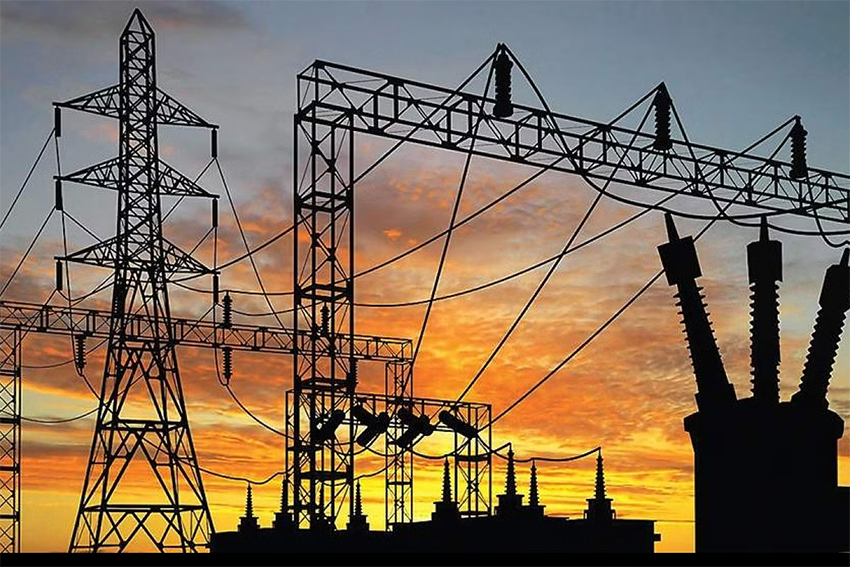27/07/2023
27/07/2023

KUWAIT CITY, July 27: A report issued by the Ministry of Electricity and Water revealed several scenarios for dealing with increased electricity loads, according to the data provided by the concerned sectors in the ministry, as well as the study by the ministry’s advisor on the maximum load for the current summer, specifically the period from June 1 to the end of August, reports Al-Qabas daily.
The report was regarding the operational status of the network for the summer of 2023, and was prepared by the monitoring and control centers to determine the availability of electrical capacity to meet the needs of consumers and to know the problems that may occur in the network and their implications. It concluded that the maximum load expected for the summer of 2023 can be determined by calculating an annual increase of four percent compared to last year’s consumption of 16,830 megawatts
Safe capacity
However, if an eight percent increase is calculated, the expected maximum load for the current summer is 17,878 megawatts, bearing in mind that the value of the available safe capacity is 17,660 megawatts, while the maximum available capacity is 18,250 megawatts. To cover the increase in loads due to any unforeseen factors or circumstances, it is necessary to raise the state of readiness, while paying attention to the readiness of the monitoring and control centers to deal with any emergency circumstance. Regarding the expected loads for the next four years by calculating an annual increase rate of four percent, the report indicated that the maximum expected load for the year 2024 is 17,503 MW.
By calculating an annual increase of 8 percent, it becomes 18,876 MW. The load will rise to 18,203 MW in 2025 when calculating an increase of 4 percent, and 20,386 megawatts at a rate of 8 percent. As for the year 2026, the maximum load will reach 18,931 megawatts at the rate of four percent, and 22,017 megawatts at the rate of 8 percent annually. The expected load in 2027 is 19,689 MW in the first case and 23,779 megawatts in the second case.
Regarding the short-term solutions and recommendations to deal with the current electrical situation, the report recommended the necessity of conducting a study and urgently purchasing energy from the Gulf interconnection network based on the expected loads, according to the annual increase rate that is approved and the generation capacity available for the current summer. It called for studying the purchase of the rotating momentary reserve, which means Kuwait’s share required for the Gulf interconnection network to participate in strengthening the unified Gulf network in emergency situations, from a member of the Gulf interconnection network, so that Kuwait’s share is used to cover any increase in loads or to reduce the loads of some generation units.
The report also urged to work on solving the problems of generating units that are still out of service and power station equipment, and carry out emergency repair operations in this regard to return them to service. In order to rationalize consumption, ensure the stability of the network at peak time and avoid power outages or resorting to programmed disconnection during the period when the demand for energy increases and the loads rise to the highest limit, the report highlighted the importance of adopting measures to reduce the values of loads at peak time, or to encourage consumption at other times and carry over part of the loads to other times. It recommended instructing the concerned authorities to confirm adherence to the approved measures regarding raising the thermostat settings of air-conditioning systems to 25 degrees Celsius or stopping air-conditioning in government institutions, offices, public places, schools and mosques during the peak period.
The measures also include stopping the production in factories and some petroleum facilities or reducing their production during peak times, or relaying and displacing loads outside peak time, such as the steel plant, to reduce loads by about 120 megawatts, and the olefins plant “OL2K w” to reduce loads by about 150 megawatts. The report referred to other possible measures, including disconnecting the electrical current during the peak hours to some industrial areas, farms and chalets, updating the schedules for automatic load separation to face any sudden and large loss of energy produced in the generation stations, and separating the Kuwait network from the Gulf electrical interconnection network to maintain the stability of the electrical system and the safe operation of the network within standard limits.


